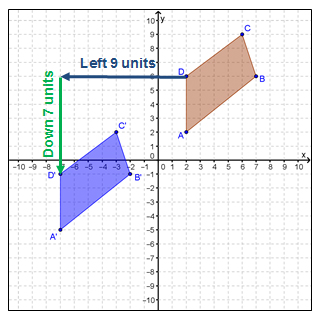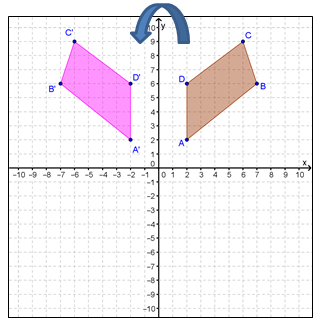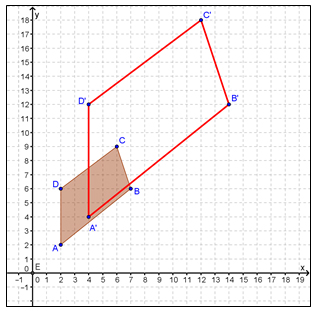
Previously, you may have investigated translations, reflections, and dilations of two-dimensional figures on the coordinate plane. You also may have developed algebraic rules for each of these transformations.

In the figure on the left, quadrilateral ABCD is translated left 9 units and down 7 units to create quadrilateral A'B'C'D'.
The algebraic rule for this translation is as follows:
(x, y) → (x − 9, y − 7)

In the figure on the left, quadrilateral ABCD is reflected across the y-axis in order to generate quadrilateral A'B'C'D'.
The algebraic rule for this reflection is as follows:
(x, y) → (-x, y)

In the figure on the left, quadrilateral ABCD is dilated by a scale factor of 2 using the origin as the center of dilation in order to generate quadrilateral A'B'C'D'.
The algebraic rule for this reflection is as follows:
(x, y) → (2x, 2y)
In this lesson, you will first extend what you know about coordinate transformations to rotations of two-dimensional figures by 90°, 180°, and 270°. You will also distinguish between transformations that generate congruent figures and transformations that do not. Further, you will generalize particular attributes of figures, such as side lengths or angle measures that are preserved with different transformations.